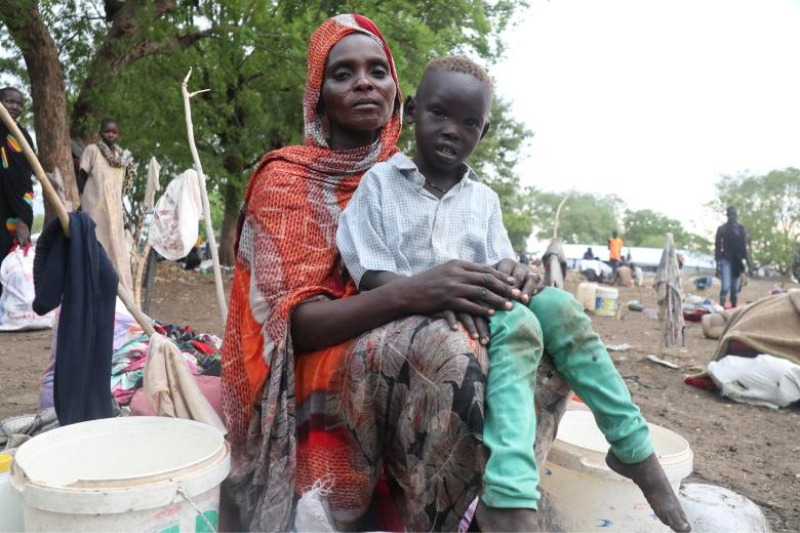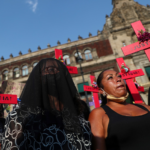
world refugee crisis closer look at refugee hotspots 2023
Last updated on July 7th, 2023 at 05:51 am
Welcome to a sobering journey into the center of the refugee crisis, one of the world’s most urgent issues at the moment. In 2023, millions of people found themselves displaced and sought refuge in foreign countries as borders turned into flashpoints for conflict. Today, we delve deeply into the nations that have emerged as the primary destinations for people searching for safety and hope, which are the eye of this humanitarian storm. Join us as we shed light on these countries dealing with great difficulties and investigate how they are managing through difficult times to offer refuge to those who need it most.
By the end of 2022, 108.4 million people, including 35 million refugees, will have been forcibly displaced worldwide as a result of persecution, violence, conflict, human rights violations, and poverty. After the terrible migrant boat disaster off the coast of Greece, this year’s total of refugees and migrants increased by almost 600.
The United Nations High Commission for Refugees (UNHCR) defines a refugee as a person who is outside their own country of citizenship or permanent residence and who is unable to seek refuge in their own country or return there due to fear of persecution because of their race, religion, nationality, political opinion, or membership in a social group. According to the organization, one in every 74 people on Earth has been forced to leave their homes.
Refugee Migration: Common Reasons
People may leave their homes and become refugees for a variety of reasons. The following are a few of the primary causes of refugee migration:
–Violence: Due to violence from war, crime, or other sources, people may flee their homes.
–Natural disasters: Natural calamities like earthquakes, floods, or hurricanes may displace refugees.
–Poverty: People may flee their homes in search of a better life elsewhere due to poverty.
–Persecution: Due to their race, religion, ethnicity, or political beliefs, some refugees are subjected to persecution.
Where are these refugees coming from and going?
Six months into 2023, only three nations—Syria, Ukraine, and Afghanistan—accounted for nearly 52% of all refugees who fall under the purview of UNHCR.
Syria
People in Syria are still feeling the effects of the 2011 Arab Spring uprising, which saw several demonstrations against authoritarian regimes in the region and quickly descended into a civil war. Millions of people are now living in poverty as a result of more than ten years of war. More than five million people are refugees, mostly in nearby countries, making up more than half of the 23 million people who were living there before the war.
Ukraine
With 5.7 million individuals, Ukrainian refugees are the second largest group of refugees. According to the UNHCR, more than 13 million people were still displaced from their homes as of February 2023, one year after Russia invaded Ukraine. This figure includes more than 5 million internally displaced people in Ukraine and nearly 8 million refugees in Europe.
Afghanistan
Approximately the same number of people fled Afghanistan as soon as the Taliban took over in 2021. More than six million Afghans have been displaced from their homes or their country due to more than 40 years of conflict, natural disasters, extreme poverty, food insecurity, and the COVID-19 pandemic that preceded the change in government refugees’ hosts.
Keep Reading
Six nations—Turkey, Iran, Colombia, Germany, Pakistan, and Uganda—have taken in more than a third of all refugees under the purview of UNHCR. The 46 least developed nations in the world, which is 2022 contributed less than 1.3% of the global GDP, also hosted more than a fifth of all refugees, according to a DW report.
To “stop irregular immigration,” some nations are instead securing their borders, with Europe leading the way.
In contrast to just 315 kilometers in 2014, the European Union and the Schengen area are now surrounded by 19 border or separation fences, totaling 2,048 kilometers (1,273 miles), according to a paper from the European Parliament from 2022. To decrease the number of people who travel north to the Mexico-U.S. border, the United States, Spain, and Canada have announced plans to establish asylum processing centers in Latin America.
In addition to being shunned away from the border, refugees who travel on these routes to escape violent conflicts face a high risk of abuse, with some journeys ending in death.
This incident is not the first of its kind.
Over the years, the Mediterranean has seen an influx of migrants and asylum seekers. According to UN statistics, over 26,000 people have perished or vanished while crossing the Mediterranean Sea since 2014. Most of these fatalities or disappearances took place in the Central Mediterranean, which is regarded as one of the world’s deadliest migration routes.
The EU’s response to boat migration across the Mediterranean has primarily concentrated on attempting to deter or prevent people from making the perilous crossing. According to a report by Human Rights Watch, this strategy is also reflected in the EU’s current emphasis on anti-smuggling measures, which includes preemptive seizure and destruction of boats used by smugglers.
Boat Accident in Greece
When the crowded boat capsized on June 14, hundreds of men, women, and children were aboard, according to reports. Many people are still thought to be missing. Pakistanis made up the majority of passengers. They are among the thousands of individuals who have fled the nation due to an economic crisis that has left many citizens without hope.
In the first five months of 2023, a record number of nearly 5,000 Pakistanis were discovered on the “central Mediterranean route” into Europe, according to data from Frontex, the border and coast guard agency of the European Union.
The victims “could be alive today if there were better employment opportunities, economic security, and political stability in Pakistan,” Imran Khan, country director for Pakistan at the United States Institute of Peace, a US federal organization, told DW.









